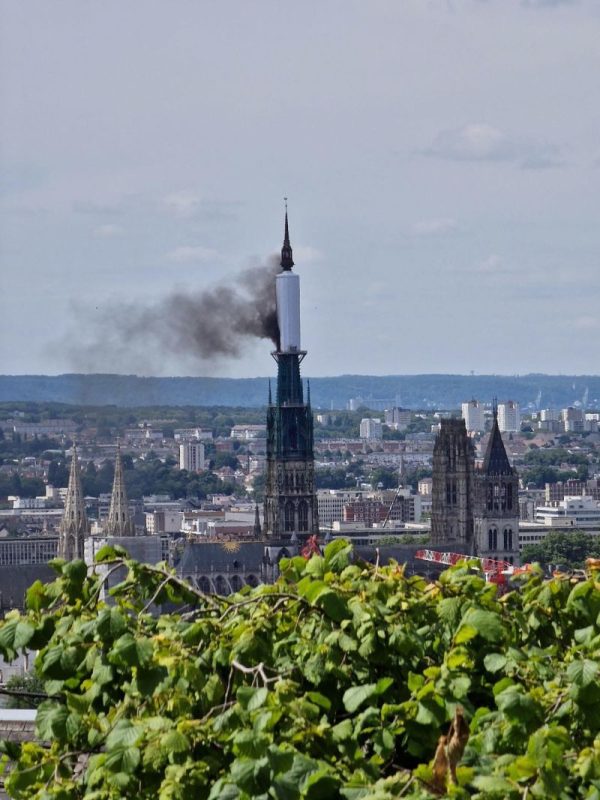An Israel Defense Forces (IDF) internal investigation into the failures to protect the kibbutz of Be’eri on October 7 found that the Israeli military “failed in its mission to protect the residents” and “was not prepared for the extensive infiltration scenario” by Hamas that day, which involved “multiple infiltration points by thousands of terrorists attacking dozens of locations simultaneously.”
Be’eri, located in southern Israel, was one of the hardest hit communities in the October 7 attacks when Hamas militants stormed the kibbutz, killing 101 of its residents, including children. Thirty people were abducted from the kibbutz that day.
The inquiry said the military had trained for isolated and specific infiltrations. “As a result, there were no additional reserve forces in the area that could have been sent to Kibbutz Be’eri,” the inquiry said.
Responding to the inquiry’s report, the Chief of the General Staff, Lt. Gen. Herzi Halevi said it “clearly illustrates the magnitude of the failure and the scale of the disaster that befell the residents of the south who defended their families with their bodies for many hours while the IDF was not there to protect them.”
The inquiry found that “the IDF struggled to create a clear and accurate situational assessment of what was happening in the kibbutz until the afternoon of October 7,” even though the local emergency team had provided an updated assessment.
“Combat in the area during the initial hours was characterized by a lack of command and control, a lack of coordination, and a lack of order among the different forces and units. This led to several incidents where security forces grouped at the entrance to the kibbutz without immediately engaging in combat,” the report said.
“The inquiry found that the security officials did not provide sufficient warning to the residents of Kibbutz Be’eri about the infiltration of terrorists during the initial hours of the terrorist attack,” the report continued.
The inquiry concluded that the turning point came only when a senior officer was appointed to coordinate forces in the area, leading to the regaining of operational control of the kibbutz.
“Despite operational errors and mistakes in force deployment, the inquiry team noted that the combat in Be’eri included a series of acts of heroism and supreme courage by the fighting forces, commanders, and security personnel who fought in the kibbutz, saving many residents,” the report said.
It also said “the bravery of the Be’eri residents and the members of the kibbutz’s civilian rapid response team is commendable and was crucial in stabilizing the defensive line during the first hours of combat, preventing the attack from spreading to other parts of the kibbutz.”
The inquiry also found that the security forces who fought in the area “operated with great bravery and heroism.” 31 security personnel were killed in the area after some “340 terrorists infiltrated the kibbutz,” of whom about 100 were killed, it said.
The inquiry team found that that the attack on Be’eri began at around 7 a.m. local time on October 7 and that Hamas controlled the kibbutz for about four hours.
During this period, the “first IDF soldiers arrive, are hit, evacuate the wounded, exit the kibbutz, and, positioning themselves at the entrance of the kibbutz, engage in combat with the terrorists who reached the gate.”
By 4.15 p.m., the 99th Division had established itself at the kibbutz and began organizing command and control.
By 6 p.m., “about 700 IDF soldiers and security forces are operating in the area of the kibbutz,” the inquiry found.
The Chief of the General Staff, Lt. Gen. Halevi, accepted the conclusions of the inquiry, and acknowledged that “the IDF did not fulfil its mission to defend the residents in the most grave manner and failed in its mission.”
Halevi noted that “from the afternoon hours onwards, forces were waiting outside the kibbutz while the massacre continued inside. This situation is extremely grave and cannot occur.”
“The reasons for this were found to include that commanders who arrived with forces entered the kibbutz with a part of the force to better understand the situation; some forces did not initiate contact since they did not understand the severity of the situation and the lack of adequate forces; some of those waiting outside were support forces providing a perimeter for those engaged in combat inside the kibbutz,” he said.
As for prioritizing the evacuation of wounded soldiers, Halevi said that civilian protection was the highest-priority mission. “Soldiers must always give priority to assisting civilians in evacuation, defense and any other need that arises in a combat zone,” he said.
Separately, Halevi told a graduation ceremony Thursday for new officers that the IDF had worked with all partners “to understand in detail and depth what happened and what we must learn to prevent it from happening again in the future.”
Be’eri kibbutz survivors were presented with the findings of the report earlier Thursday.
“It can be said that the investigation was thorough and helped the members of the kibbutz understand a little the depth and complexity of the fighting in the various sectors of the kibbutz,” a statement released by Be’eri spokesperson Michal Paykin said.
But he said some important questions remained unanswered.
“For example: Why did the many military forces who gathered at the gate not enter the kibbutz for many hours, when the kibbutz was burning, and its residents were crying for help? What caused the intelligence failure that enabled the Hamas invasion plan, and how was the border fence breached without an immediate response from the IDF?” he said.
Members of “Kibbutz Be’eri did not need the results of the investigation to feel the failure of the IDF” that morning. “The failure of the army has been burned into our bodies and in our hearts for nine months,” the statement adds.
Former residents are now calling for a state commission of inquiry to “examine the conduct of all the parties and provide us with answers with which we can begin to recover,” the statement added.
“Finally, and most importantly, we demand to deal with the abandonment that is happening right now across the border – the abandonment of the hostages to their fate for nine months. The ongoing failure to return them to this day must stop,” the statement ends.
Speaking about a state inquiry, Defense Minister Yoav Gallant said Thursday at the officers’ graduation ceremony: “It should check all of us: decision-makers and executive officers, the government, the army and the security agencies, in this government, and in the governments of the last decade that led to the events of October 7.”
“It should examine me, the Minister of Defense, it should examine the Prime Minister, the Chief of Staff and the head of the Shin Bet, the IDF, and the national bodies subordinate to the government,” Gallant said.
A commission “must examine the intelligence and operational failure of the events of the 7th October,” as well as examine “the errors made in assessing the enemy’s capabilities and in warning of its intentions – that culminated on the 7th of October,” Gallant said.
One focus of the inquiry into events at Be’eri on October 7 was the effort to save 13 people held hostage in a house at the kibbutz.
There had been speculation that the hostages had been killed by tank fire from the Israeli military as it tried to force entry to the house, but the inquiry found that Hamas operatives at the house probably killed the hostages.
“After gunfire was heard from within the house and the terrorists communicated their intent to commit suicide and kill the hostages, the security forces decided to breach the house to attempt to save the hostages, and conducted combat operations under difficult conditions,” the inquiry concluded.
It said that “commanders and forces made professional and responsible decisions, and fully exhausted negotiation efforts. The tank fire towards the area near the house was carried out professionally, with a joint decision made by commanders from all the security organizations after careful consideration… with the intent to apply pressure to the terrorists and save the civilians held hostage inside.”
“The team determined that, based on the information reviewed and to the best of their understanding, no civilians inside the building were harmed by tank shell fire, except for an isolated incident outside the building where two civilians were injured by shrapnel,” it continued. “The team determined that most of the hostages were likely murdered by the terrorists, and further inquiries and reviews of additional findings are necessary.”
Regarding the conclusions, Halevi said, “In such events, the commander on the ground must make difficult decisions with the goal of saving as many civilians as possible. The inquiry revealed that this value guided the decision-making of the commanders on the ground during this event.”
IDF spokesman Daniel Hagari said later Thursday that the IDF had been trying to carry out negotiations with Hamas but those failed.
“The decision to bombard the house was taken only after all options were exhausted and only after there were noises of shooting where there was a suspicion that the hostages were executed. Civilians were not killed by the tank fire. They were killed by the terrorists. There is only one incident in which we can say that one civilian was killed from shrapnel,” he said.
This post appeared first on cnn.com










